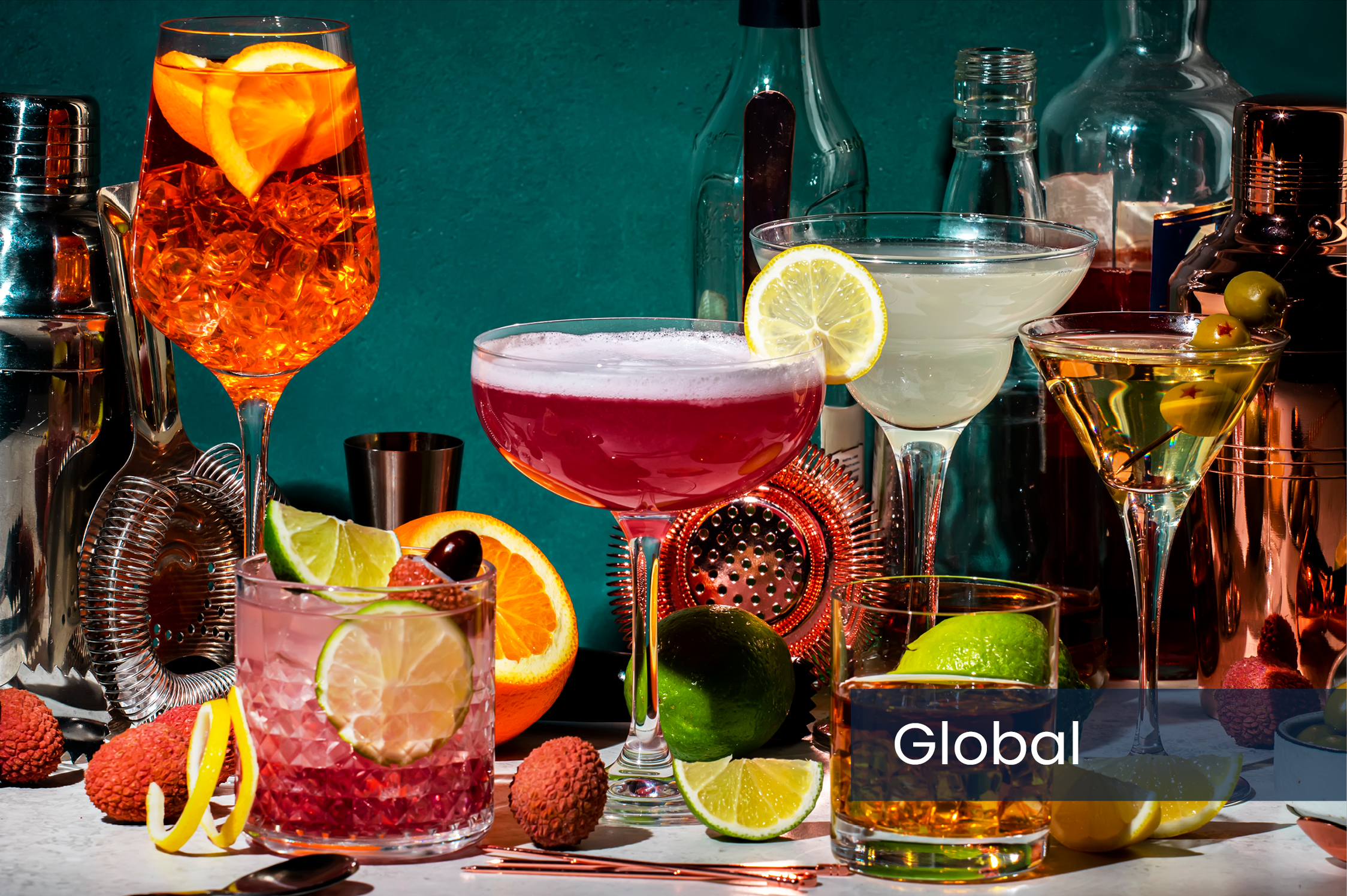
Let me take you back to the summer of 2009, a summer when the Black Eyed Peas ‘Boom Boom Pow’ and ‘I Gotta Feeling were topping the charts and a summer where Lady Gaga made one of her many fashion statements by donning an outfit made of stuffed Kermit the Frog toys. It was evidently a time of questionable choices and, unlike the array of superb summer drinks that we are faced with today, it seems that this extended towards drinks too.
For it was the summer of 2009 when I ordered my first-ever cocktail. I was barely 18, in a British-themed bar as questionable as my three-quarter length shorts, in the holiday resort of Palma Nova and, perhaps Gaga-inspired, I plumped for what was called a frog splash. It was bright green and it made my teeth hurt from the sugar. It cost three euros and fifty cents.
My memory of that drink is as vivid as the drink itself was, but so too is my memory of the day after one green drink turned into three, four or five. I won’t go into detail, but it isn’t pleasant.
Since then, I would like to think that my cocktail choices have become ever so slightly more sophisticated. The growth of cocktail culture globally and the omnipresent staples of negronis, margaritas and old fashioneds on menus means that one is never too far away from a great option. However, much like the ill-effects of that fateful frog splash, there may be unintended and harmful consequences for spirits companies riding the cocktail tide.
At this point I really do need to emphasise that an on-premise serve strategy is vital for every single brand, especially for spirits and that, nine times out of ten, cocktails should play a part.
The growth of cocktails over the past decade has been one of the success stories of the sector, and one which is fundamental to spirits’ growth more broadly.
Cocktails have been democratised and are now firmly established as a gender-neutral go-to drink, suitable for all occasions – a shift from what was once seen as the premise of swanky bars or females alone – and spirits companies have reaped the rewards.
Indeed, Gen Zers are the first set of consumers that we have ever seen that are just as likely to choose cocktails as they are to choose beer; a new generation of consumers are opting for cocktails as a go-to choice.
However, in an on-premise sector in which brands are built and trusted, long-lasting connections between consumers and brands are forged, where does this swing towards an often-un-branded choice leave our products?
While older consumers previously developed relationships with spirits brands over years of bar calls and standard spirit-mixer serves, the newest generation of on-premise visitors are skipping this and instead reverting to names of cocktails as the ‘brand’. Our products, therefore, are in danger of losing the additional rewards of equity, affinity and salience that is built in the sector, which is instead being transferred to those cocktail serves.
The risk here is evident. In an on-premise sector where value for money is the No.1 factor growing in importance for consumers when choosing drinks, operators might be tempted to cut corners and maintain margin, opting for ‘me too’ or private label cocktail ingredients — at the expense of brands, especially if guests are less likely to ask for specific labels.
Of course, some (but relatively few) companies have navigated this with winning cocktail serve strategies that retain and protect the brand: the Aperol spritz (or, indeed, the Campari spritz) and, arguably, the sazerac. Many have tried either through menu listings with branded serves, or even through trademarked signature serves, such as the Dark ‘N Stormy (with one apostrophe), owned by Goslings.
So how then to navigate this vicious juxtaposition of the necessity of a cocktail strategy which can both damage long-term brand health and provide opportunities for lower-cost competitors?
It comes down to education and it comes down to the touchpoints at which this education can be delivered.
The great thing about this wonderful on-premise sector is that it is filled with consumers eager to make more informed decisions, supported by learning manuals in the form of menus to help them to do so, and bar staff eager to tell brand and serve stories to further assist them.
Help to communicate why your brand is perfect for that delicious cocktail and you will build ambassadors for life, just make sure that it isn’t in a frog splash.
To learn more about CGA’s REACH survey and other sources of consumer insights for suppliers and operators across global markets to support your global strategies, click here or contact Charlie Mitchell here.
Originally published in Global Drinks Intel Magazine




